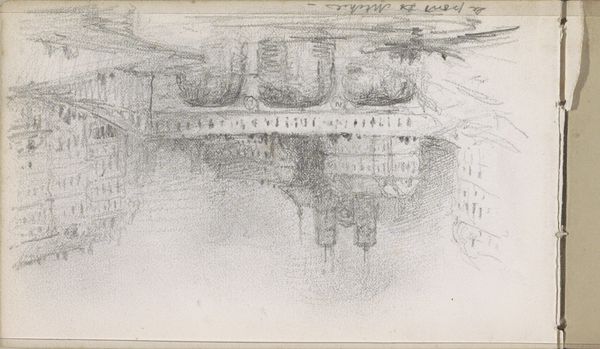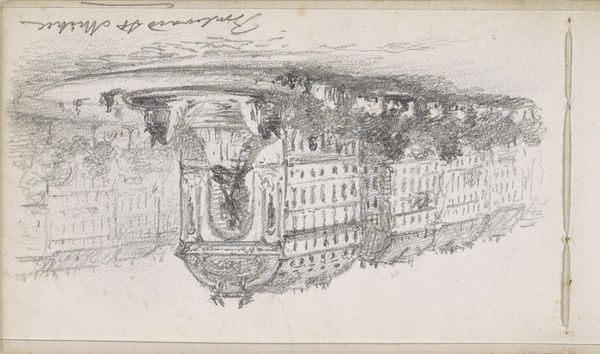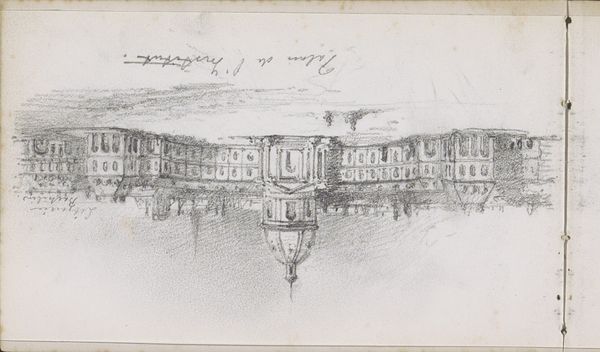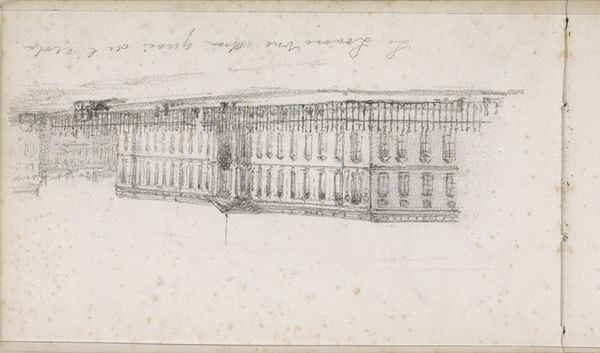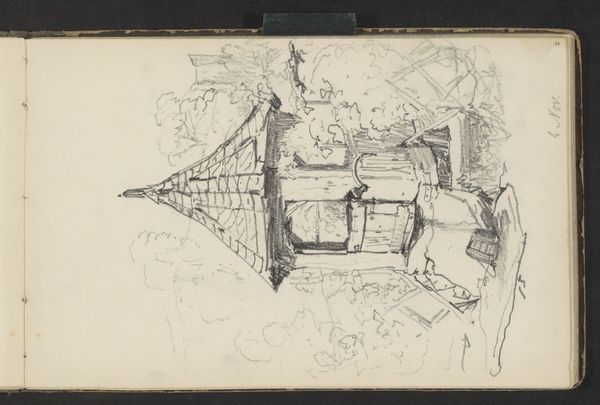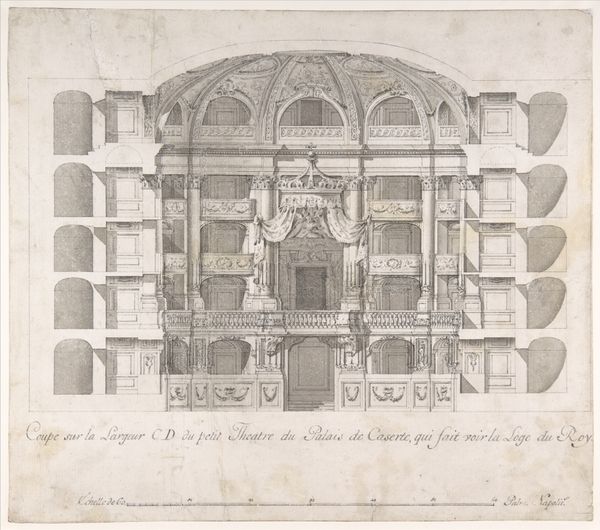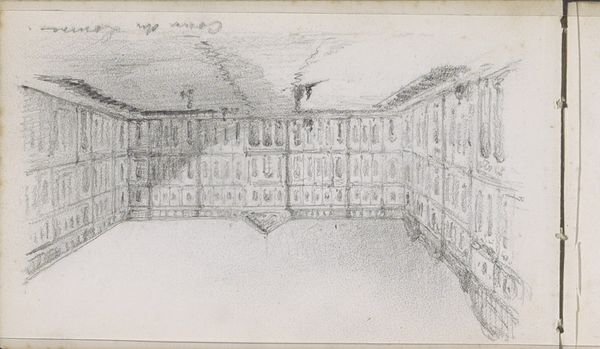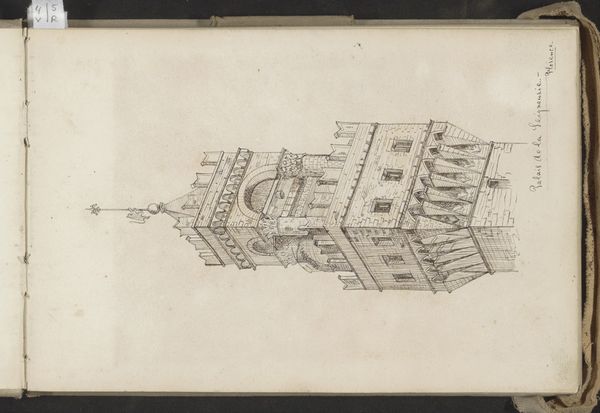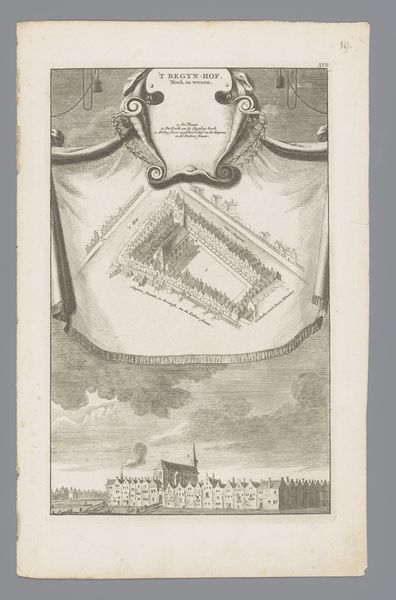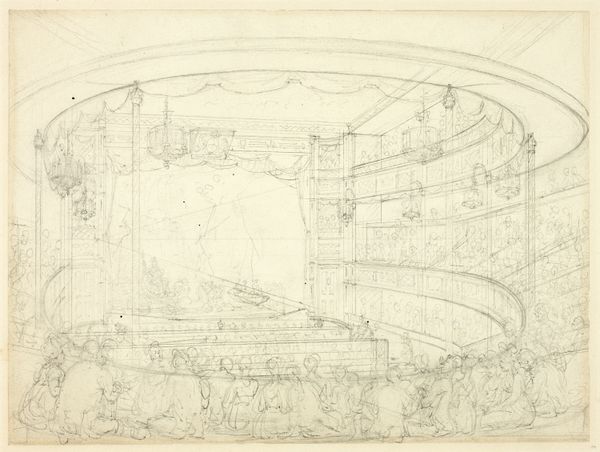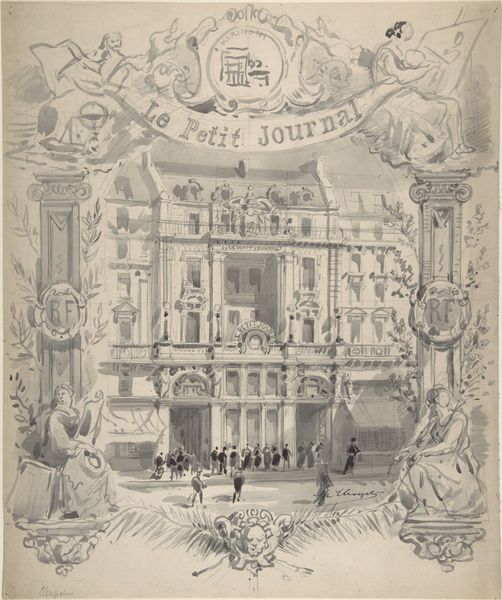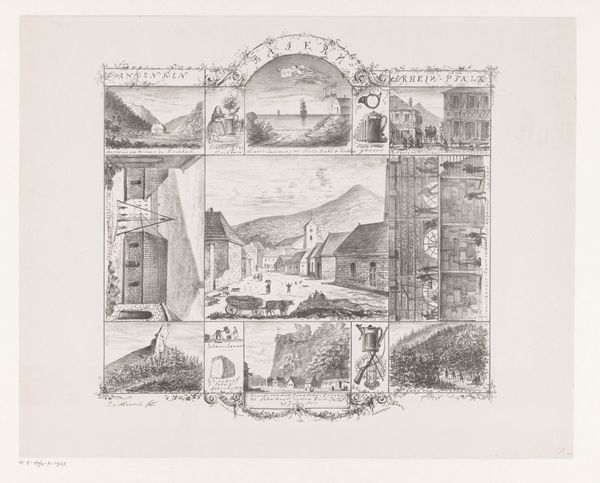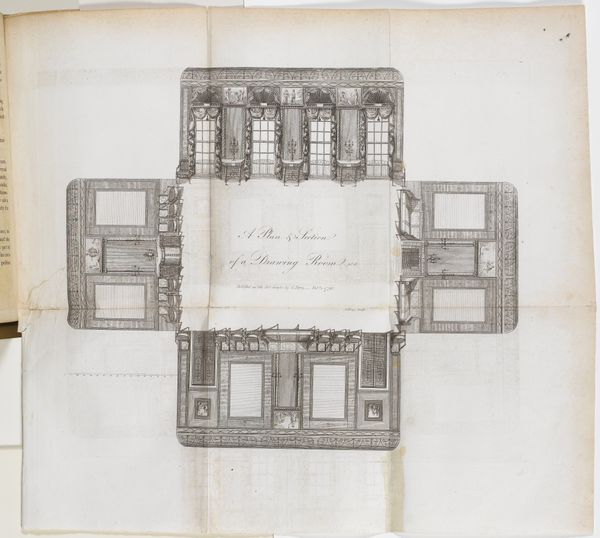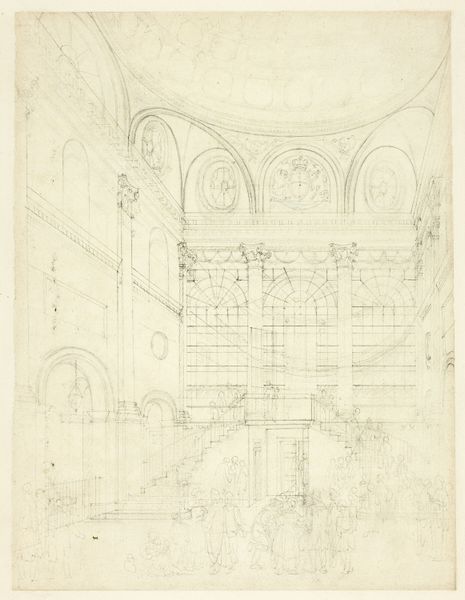
drawing, pencil, architecture
#
drawing
#
pencil sketch
#
landscape
#
pencil
#
architecture
#
realism
Copyright: Rijks Museum: Open Domain
Editor: Here we have Maria Vos’ 1867 pencil drawing, “Binnenplaats van het Louvre,” housed in the Rijksmuseum. There's a captivating austerity to the scene. What structural elements strike you as most significant in this particular drawing? Curator: The use of line, unequivocally. Notice how Vos employs hatching and cross-hatching to delineate depth and shadow. The precision in the architectural rendering, even in sketch form, suggests an emphasis on geometric clarity. Do you perceive a particular system at play in how Vos organizes the architectural elements within the frame? Editor: I see repetition in the facade details like the window frames and decorative molding, but the dome at the front is a clear focal point, disrupting that pattern and anchoring the composition. Curator: Precisely. The strategic placement of the dome establishes a hierarchical relationship, a visual keystone so to speak. It functions not merely as a representational element, but also as a formal device dictating the viewer’s movement through the piece. The strategic imbalance provides a spatial tension which arrests our gaze. Do you think the work succeeds as a depiction of the site in question? Editor: Considering this work’s precision and the formal qualities you've discussed, it makes me appreciate the Louvre beyond its fame and historical significance. It gives me a deeper understanding and reverence for its architecture. Curator: And that reverence is exactly what makes a seemingly simple sketch such a rich piece of formal expression.
Comments
No comments
Be the first to comment and join the conversation on the ultimate creative platform.
